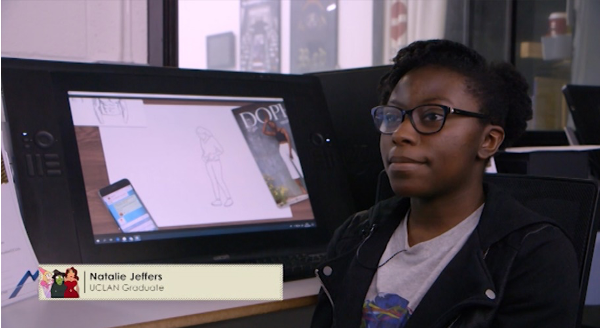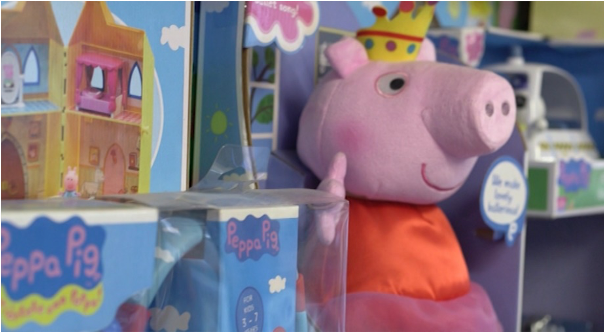
Recently I produced and directed a documentary about women working in the animation industry which highlighted the lack of women in key creative roles. The documentary, entitled British Animation Women Breaking the Mold, was broadcast on Sky Showcase Channel 192 on October 13th, 2019. The women interviewed in the documentary were from a range of backgrounds – animators, directors, commissioners, and writers. They all stated that there are fewer women in the animation industry in key creative roles. Yet, UK Screen Alliance, Animation UK, and Access VX published a rather surprising report in 2019 that does not reflect the stories being told by the women interviewed in the documentary. The survey revealed that 51% of workers are women – 89% in production, 55% in senior creative production, and 49% in creative artist roles. At first impression, these figures seem very exciting, and it would appear that the women I interviewed are in a minority. However, on further examination, the categories seem rather vague. What does ‘senior creative production’ or ‘creative artist roles’ actually mean? Why was there no mention of ‘Director’ or ‘Animator’ or ‘show creator’? These categories could include a number of roles that are traditionally dominated by women. For example, production and art working could include paint and trace, while craft could enclose making models and puppets. All the women included in the documentary state that women dominate production and artwork areas of the pipeline and are in the minority in areas such as directing, creating series, or storyboarding. Have these vague categories skewed the figures to ensure that the animation industry appears to be more inclusive? If so why? Having spent over a year interviewing various women across the industry, it seems odd that not one of them said that they were in the majority in this industry, particularly with roles such as directors or show creators. If you look at the shows created over the past 20 years, only 6.5% are created by women.
More precisely, if we consider the total number of animation series commissioned or co-produced in the UK between 1990 and 2018, only 6.5% are created by women. 8.5% of these shows are directed by women and 91.5% by men. In 1996 there were 2 UK adult shows aired on mainstream TV created by women: Crapston Villas (Sarah Ann Kennedy, 1995-1997) and Pond Life (Candy Guard, 1996-2000) (see Kitson, 2008: 157–162, 166–169). Less than a fifth of creative/directorial roles are held by female workforce in the US but overall in the industry is more equal (see Honess Roe, 2017). A survey I conducted of British animated series reveals that there have been no black women directors or writers so far. The research for the survey was taken from various sources, one to one interviews, imdb, and Wikipedia.
Another factor that cropped up during these interviews was the influence of merchandising and distribution. Production costs for series are no longer awarded in total from one broadcasting channel. Co-productions are the norm with a variety of sources funding each project. Distributors and merchandising companies are often involved and will have a say in the kind of content they want or think will sell. As stated by Cheryl Taylor, Head of BBC Children, in British Animation Women Breaking The Mold, ‘Distributors often don’t want a series with a female character as the lead.’ Likewise, Kitty Taylor, director of Bitz and Bobs, affirms in the documentary: ‘And then I met with the distributors who still see a pink and a blue aisle, and then I was met with a whole world of tricks.’ There appears thus to be a glass ceiling that women struggle to break through, and yet reports by organizations like UK Screen Alliance, Animation UK, and Access VFX do not seem to take this into account.

It appears that the larger the budget, the greater the idea of investing in a project with a large amount of uncertainty (i.e., a female director, or female lead) appears to be too dangerous. Animation director Kitty Taylor was frustrated with the lack of creative freedom she had when working on Pre-school Animation series Bitz and Bobs (2018). The issues came when she was confronted by the investors and merchandising companies who started to dictate the look and personality of the character – her hair got longer, she wore pink and became more like other female characters. Phil Davies (Peppa Pig), has declared: ‘Boys toys are priced higher than girls because merchandisers see the boys market as having more value’ (Davies in London Animation Society, 2019). Similarly, the director of Arthur Christmas (2011), Sarah Smith (Locksmith Animation), would like to employ more women directors, but the investors just won’t take a risk on an inexperienced director.
When conducting my initial research by interviewing women across the industry, there appeared to be clear paradoxes with inequalities in gender and race. In the animation industry, networking and word of mouth are key methods of gaining employment. ‘There is evidence that this may have different outcomes for men and women in the creative industries’ (Grugulis & Stoyanova, 2012: 2). This appears to put women in animation series at a disadvantage. The uncertainty of not knowing what the next job is means freelance animators are always in a permanent state of looking for work and therefore constantly networking (Randle and Culkin, 2009). Gill’s research into new media workers found networking to be ‘a form of gendered exclusion – the activities of an “old boys” network’ (2002: 82). Women with young children are more likely to struggle with networking than men with children (Campbell, 1988). The very nature of networking means that people from the same ilk are more likely to relate to each other and therefore there is less chance of challenging the current dominant hierarchy or hegemony. The discourses discussed by Natalie Wreford about the screenwriting industry echo the animation series industry, and these are ‘to challenge the symbolic violence … of discourses of ‘meritocracy’ so prevalent and embedded in the creative industries that they are accepted and seen as legitimate even by those who benefit least from them’ (Wreford 2015: 93).
Click here to watch the full documentary. Scroll down the screen to where it says ‘Click here to watch the full documentary.’ Password is: crapston.
References
Bourdieu, P., and Wacquant, L. (1992). An invitation to reflexive sociology, Chicago: University of Chicago Press.
Campbell, K.E. (1988).‘Gender differences in job-related networks’, Work and Occupations, 15(2).
Honess Roe, B. (2017). “The Gendered Past of Animation: Exploring the Historiography of Women in Animation”, animationstudies 2.0. Available at: https://blog.animationstudies.org/?p=2225 [Accessed 17 Oct. 2018].
Kennedy, S. (2010). “Has the feminism failed the British Animation industry?”, Popular Culture Conference. Available at: http://clok.uclan.ac.uk/5343/ [Accessed 5 Nov. 2018].
Kennedy, S. (2014). “Is the Straight Role in Comedy Essential and Why Is It Usually Played by a Woman in Animation?”, animationstudies 2.0. Available at: https://blog.animationstudies.org/?p=998 [Accessed 17 Oct. 2018].
Kitson, C. (2008). British animation, Bloomington: Indiana University.
Wreyford, N. (2015). “Birds of a Feather: Informal Recruitment Practices and Gendered Outcomes for Screenwriting Work in the UK Film Industry”, The Sociological Review, 63(1_suppl), pp.84-96.
Sarah Ann Kennedy-Parr has worked as an academic at University of Central Lancashire for the past 13 years, where she is now MA Course Leader. She has previously worked in animation series for 20 years. Her credits include writing and directing an adult animated soap opera for Channel 4 called Crapston Villas, writing and animating Nights and Family Favourites for Channel 4, as well as writing for children’s shows such as Peppa Pig, and Dolly in Pond Life for Channel 4. She still voices Miss Rabbit for Peppa Pig and Nanny Plum for Ben and Holly’s Little Kingdom.
